A visit to Hampton Court Palace experienced a unique combination of its annual Free Garden Day and the Bushy Park Parade, transforming a regular weekend into a journey through royal history and community celebration. The palace's 60 acres of meticulously maintained gardens, including the 1768 Great Vine producing 600 pounds of grapes annually and the historically accurate Kitchen Gardens, offered a free feast for the senses with their diverse horticultural wonders and heritage seed program. Seamlessly transitioning to Bushy Park, I enjoyed the parade, a community event amidst the park's 1,100 acres.
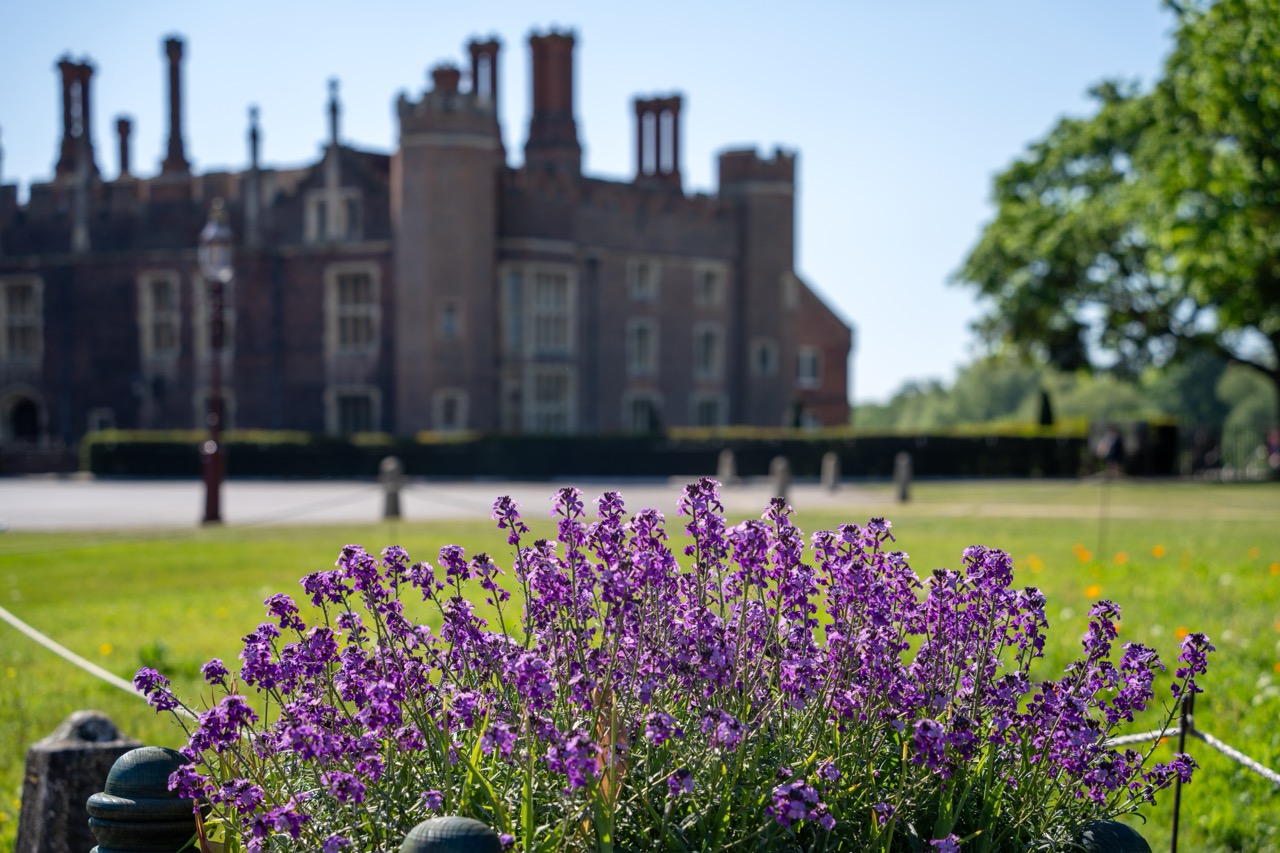

1. Overall Rating (0–10) — 7.5
This photograph captures a serene juxtaposition of nature and history, where vibrant purple flowers in the foreground draw the eye toward the softly blurred grandeur of a stately brick mansion. The shallow depth of field elegantly separates the delicate blooms from the imposing architecture, creating a dreamy, almost timeless atmosphere. While the image is visually pleasing and well-composed, the slightly overexposed sky and muted background details prevent it from achieving full artistic impact.
2. Composition (0–10) — 8.0
The foreground flowers serve as a strong focal point, leading the viewer’s gaze toward the blurred castle in the background. The diagonal line of the grassy lawn and the placement of the flowers create a balanced, dynamic frame that guides the eye naturally through the scene.
3. Lighting (0–10) — 7.5
Bright, natural sunlight enhances the vividness of the purple flowers and the warmth of the brick structure. The light is even and clear, though the sky is slightly washed out, indicating a high-contrast scene that could benefit from a slight exposure adjustment.
4. Color & Tone (0–10) — 8.0
The rich purple of the flowers contrasts beautifully with the lush green lawn and the warm red-brown tones of the building, creating a harmonious and vibrant palette. The colors are saturated yet natural, enhancing the photograph’s visual appeal.
5. Creativity (0–10) — 7.0
The use of selective focus and the pairing of delicate flora with grand architecture reflect a thoughtful artistic approach. While the concept is familiar, the execution demonstrates a clear intent to highlight the interplay between nature and heritage.
6. Technical Quality (0–10) — 8.0
The focus on the flowers is sharp and precise, with excellent clarity in the foreground. The background remains softly out of focus, indicating a deliberate use of aperture control. The image is clean, with minimal noise and good resolution.
7. Emotional Impact (0–10) — 7.5
The photograph evokes a sense of peace and nostalgia, inviting the viewer to imagine a quiet afternoon in a historic garden. The contrast between the fleeting beauty of the flowers and the enduring presence of the castle adds a contemplative depth to the image.


1. Overall Rating (0–10) — 7.0
This photograph captures a candid moment of a tourist photographing a historic site, blending human interaction with architectural grandeur. The warm sunlight and layered depth create a lively, immersive atmosphere, while the contrast between the modern smartphone and the ancient brickwork adds a subtle narrative tension. The image is slightly hindered by a distracting green tent, which disrupts the historical ambiance, but its authenticity and composition make it engaging.
2. Composition (0–10) — 7.0
The man in the foreground is well-placed, creating a natural focal point, while the archway frames the background, guiding the eye through the scene. The inclusion of the stone carving on the left adds visual weight and balance, though the tent on the right slightly disrupts the symmetry.
3. Lighting (0–10) — 8.0
Natural sunlight bathes the scene in warm, golden light, enhancing the texture of the brick and stone. The light creates soft shadows and highlights that add depth and dimension, especially within the archway.
4. Color & Tone (0–10) — 6.5
The warm reds and browns of the brickwork are rich and inviting, complemented by the soft tones of the man’s sweater. However, the bright green tent introduces a jarring pop of color that disrupts the historical palette.
5. Creativity (0–10) — 7.0
The image successfully blends documentary realism with artistic framing, capturing both the moment and the setting. The juxtaposition of the modern tourist and the ancient architecture offers a thoughtful commentary on heritage and memory.
6. Technical Quality (0–10) — 7.5
Sharp focus on the man and foreground elements, with a pleasing depth of field that softly blurs the background. The exposure is well-balanced, and the details in both light and shadow are preserved.
7. Emotional Impact (0–10) — 6.5
The photograph evokes a sense of curiosity and connection—both to the place and to the people visiting it. The viewer is drawn into the experience of tourism and historical appreciation, though the presence of the tent tempers the emotional resonance.
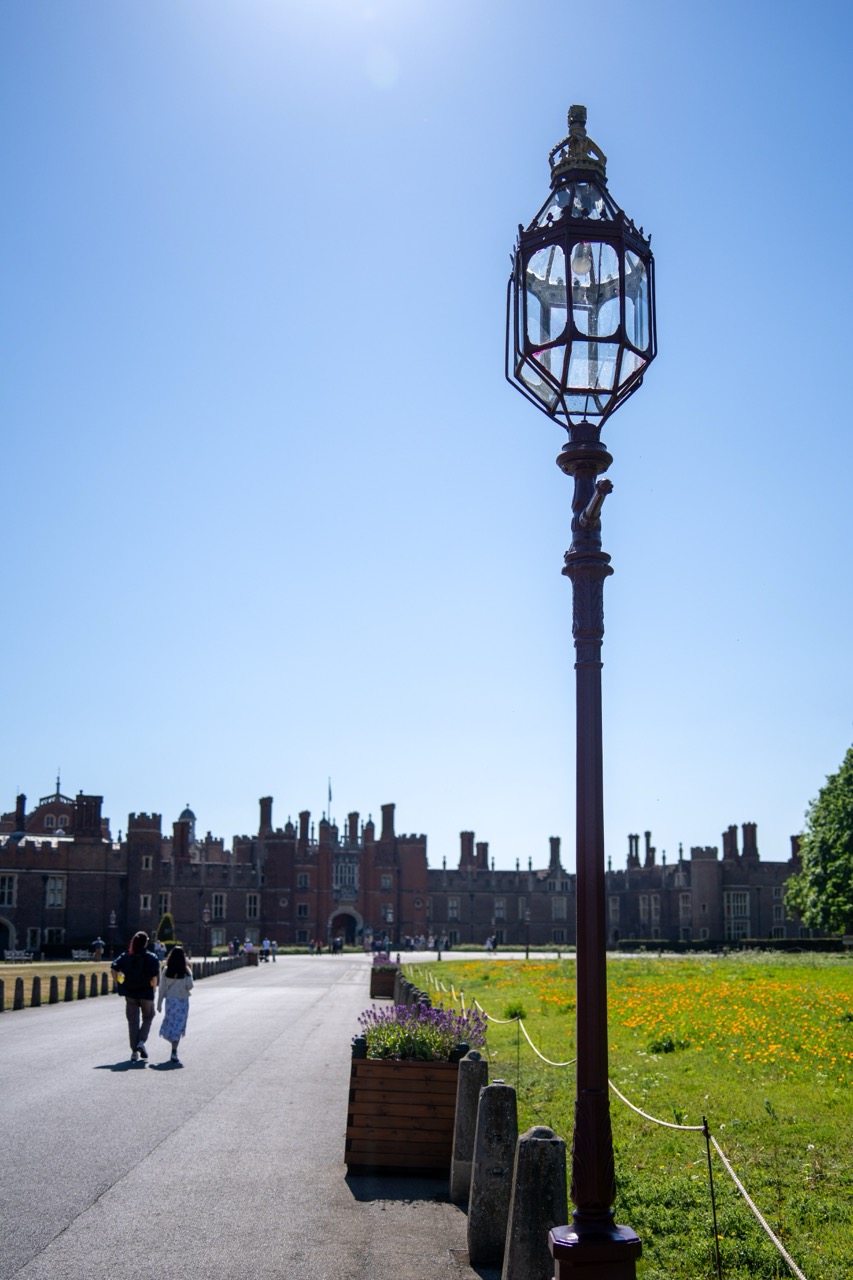

1. Overall Rating (0–10) — 7.0
This photograph captures a serene and sun-drenched moment at a historic estate, where the interplay of light and architecture evokes a sense of timeless grandeur. The ornate lamppost in the foreground acts as a strong visual anchor, guiding the eye toward the majestic red-brick palace in the distance. While the composition benefits from natural brightness and a clear focal point, the vast sky and slightly distant subject reduce the intimacy of the scene, creating a more observational than immersive experience.
2. Composition (0–10) — 7.5
The lamppost on the right creates a strong vertical element that balances the horizontal sweep of the driveway and palace. The diagonal path leads the viewer’s gaze naturally into the frame, while the two figures add a sense of scale and narrative. A tighter crop might have increased focus, but the wide perspective effectively communicates the space and atmosphere.
3. Lighting (0–10) — 8.0
The bright, direct sunlight enhances the vividness of the scene, casting sharp shadows and emphasizing the textures of the brickwork and foliage. The high-contrast lighting creates a crisp, clear image, though the intense overhead sun slightly flattens some details in the shadows.
4. Color & Tone (0–10) — 7.5
The vibrant blue sky contrasts beautifully with the warm reds of the building and the golden-yellow wildflowers, creating a rich and harmonious palette. The lush green grass and purple flowers add depth and seasonal charm, while the overall tonal range feels balanced and lively.
5. Creativity (0–10) — 7.0
The choice to frame the shot with the lamppost and include the walking figures introduces a narrative quality, inviting viewers to imagine themselves in the scene. The juxtaposition of historic architecture with modern visitors adds a subtle layer of timelessness, though the concept is more illustrative than experimental.
6. Technical Quality (0–10) — 8.0
The image is sharp and well-focused, with excellent clarity throughout. The exposure is well-managed, capturing detail in both highlights and shadows, and the lens flare from the sun adds a touch of authenticity without detracting from the composition.
7. Emotional Impact (0–10) — 7.0
The photograph evokes a sense of peaceful reverence and wanderlust, capturing the quiet beauty of a historic place on a perfect summer day. The combination of grand architecture, natural elements, and human presence fosters a contemplative mood, inviting reflection on history and leisure.
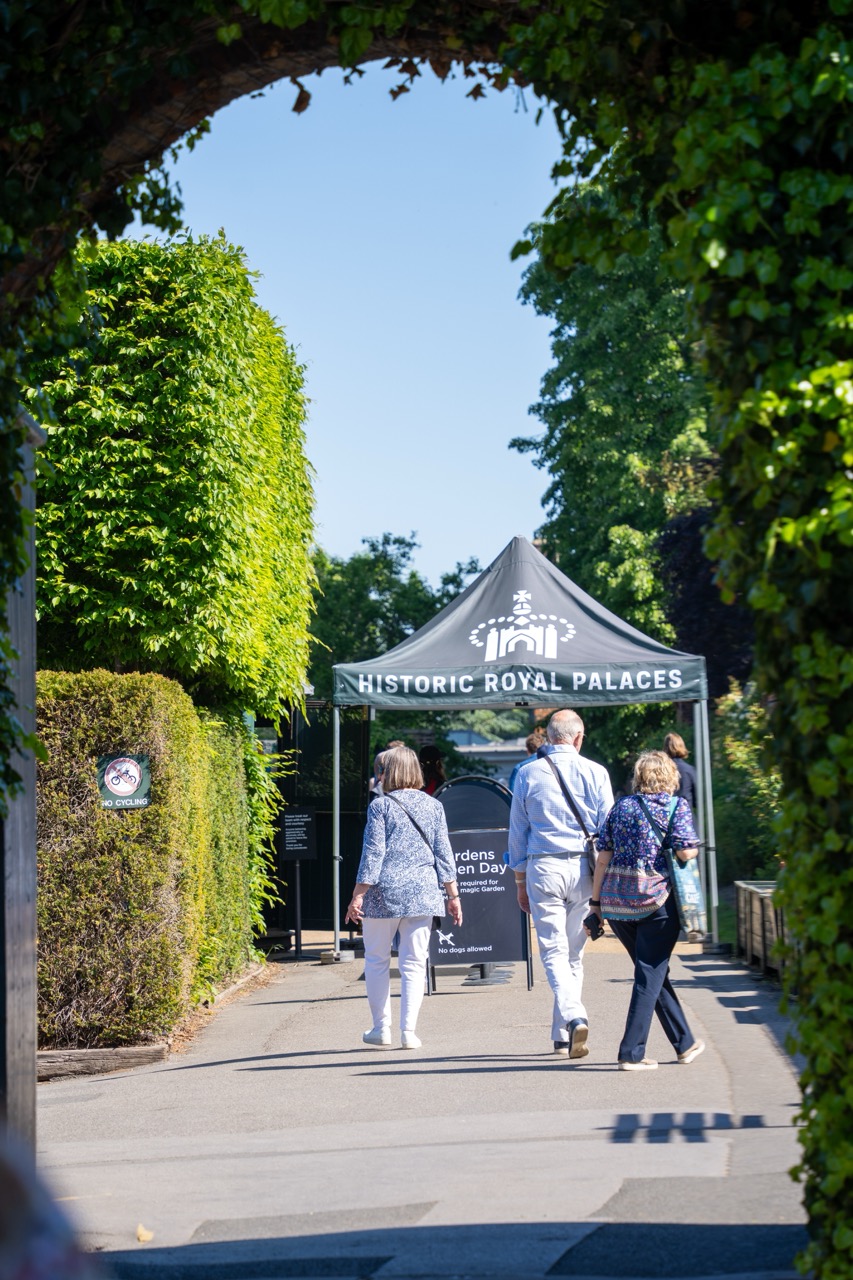

1. Overall Rating (0–10) — 7.0
This photograph captures a serene and inviting moment at a historic garden entrance, where the natural frame of the leafy archway enhances the sense of journey and discovery. The bright sunlight and lush greenery evoke a peaceful, almost timeless atmosphere, while the visitors add a human element that grounds the scene in everyday life. The image is well-composed and rich in detail, though its narrative depth is slightly restrained by the absence of a more compelling focal point or emotional tension.
2. Composition (0–10) — 7.5
The archway creates a natural frame that draws the eye toward the center of the image, leading the viewer along the path toward the visitors and the tent. The diagonal lines of the walkway and the placement of the figures create a sense of movement and progression, while the balanced greenery on either side adds symmetry and visual harmony.
3. Lighting (0–10) — 8.0
Bright, natural sunlight illuminates the scene with clarity and warmth, enhancing the vividness of the green foliage and casting soft shadows that add depth. The light is evenly distributed, avoiding harsh contrasts, and contributes to the image’s airy, open feel.
4. Color & Tone (0–10) — 7.5
The palette is dominated by rich greens and crisp whites, creating a fresh and harmonious contrast that complements the natural setting. The neutral tones of the pavement and the dark canopy provide grounding elements, while the subtle variations in hue across the foliage add visual interest.
5. Creativity (0–10) — 6.5
The photograph is conceptually straightforward, using the archway as a narrative device to suggest entry into a world of history and beauty. While the framing is effective and the moment is well-captured, the image leans more toward documentation than artistic interpretation, offering a pleasant but not particularly daring visual statement.
6. Technical Quality (0–10) — 8.0
The image is sharp and clear, with excellent focus on the subjects and background. The exposure is well-managed, and the depth of field effectively isolates the central path and figures while still preserving context in the surrounding environment.
7. Emotional Impact (0–10) — 6.5
The image evokes a sense of calm and curiosity, inviting the viewer to imagine stepping through the arch and into the tranquil world beyond. The presence of people adds a gentle warmth, suggesting a shared experience of discovery and leisure, though the emotional resonance is moderate due to the scene’s familiar and unchallenging nature.
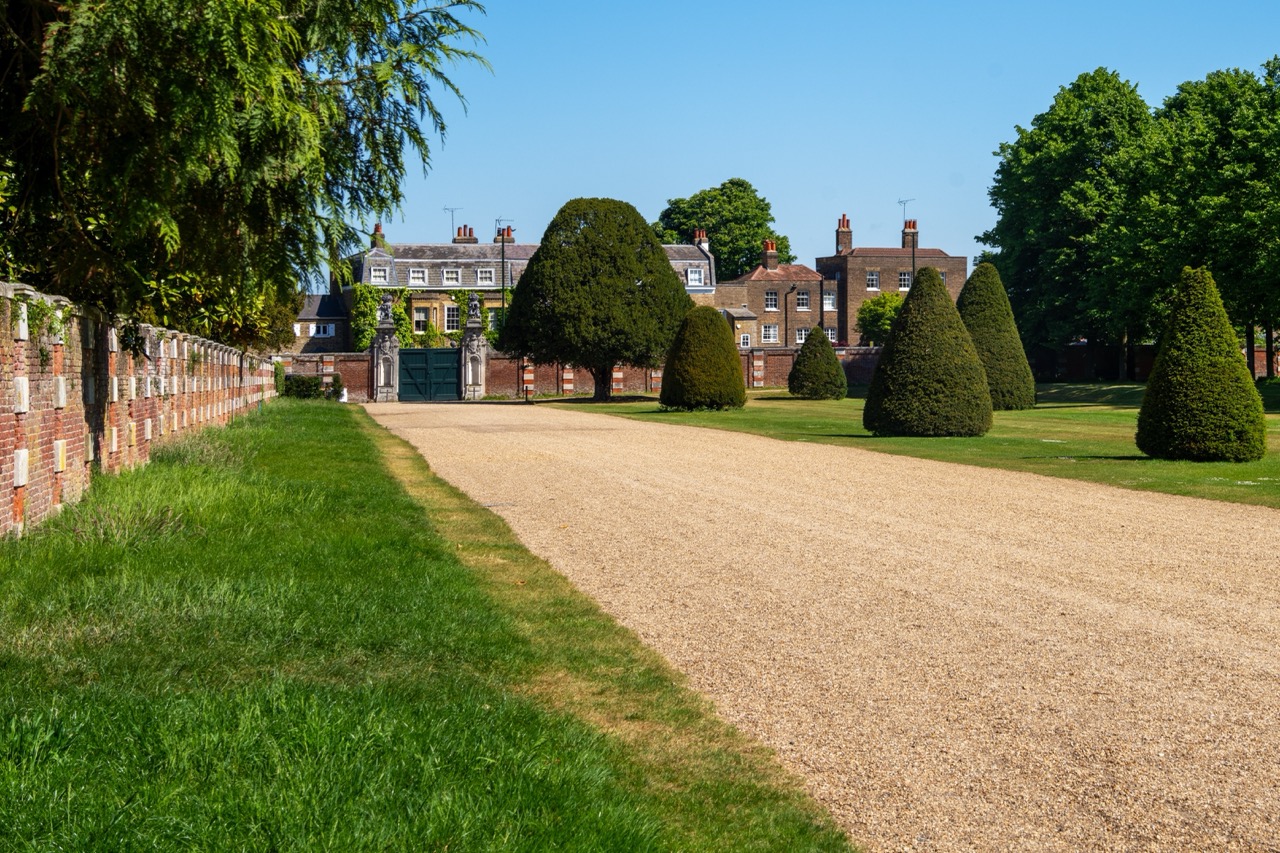

1. Overall Rating (0–10) — 7.8
This photograph captures the serene grandeur of a formal English garden, where meticulous landscaping meets historic architecture under a clear blue sky. The gravel path draws the eye toward the stately gate and estate beyond, evoking a sense of timelessness and quiet dignity. While the image is strong in composition and clarity, its emotional resonance is slightly restrained by the absence of human presence, leaving the scene feeling more like a postcard than an intimate moment.
2. Composition (0–10) — 8.0
The diagonal path creates a strong leading line, guiding the viewer’s gaze through the frame toward the central gate and buildings. The placement of the brick wall on the left and the sculpted topiary on the right balances the composition, while the open space on the right prevents visual clutter.
3. Lighting (0–10) — 8.5
Bright, natural sunlight enhances the textures of the gravel, grass, and brickwork, casting subtle shadows that add depth. The clear blue sky and even illumination suggest a midday shot, with light that feels both crisp and warm.
4. Color & Tone (0–10) — 8.0
The palette is rich and harmonious, with deep greens of the lawns and topiary contrasting beautifully against the warm beige of the gravel and the red-brown of the brick. The vibrant blue sky provides a strong backdrop, enhancing the overall sense of clarity and openness.
5. Creativity (0–10) — 7.5
The image successfully captures the elegance of formal garden design, with its symmetry and deliberate planting. While not overtly experimental, it conveys a strong sense of place and history, offering a refined and contemplative perspective on landscape and architecture.
6. Technical Quality (0–10) — 8.5
The photograph is sharp and well-focused, with excellent detail visible in the textures of the grass, gravel, and foliage. The exposure is balanced, with no blown-out highlights or lost shadows, suggesting high-quality camera work and post-processing.
7. Emotional Impact (0–10) — 7.0
The image evokes a sense of peace and order, inviting the viewer to imagine strolling along the path into a world of quiet refinement. While the absence of people keeps the mood somewhat detached, the visual beauty and historical context create a gentle emotional pull.
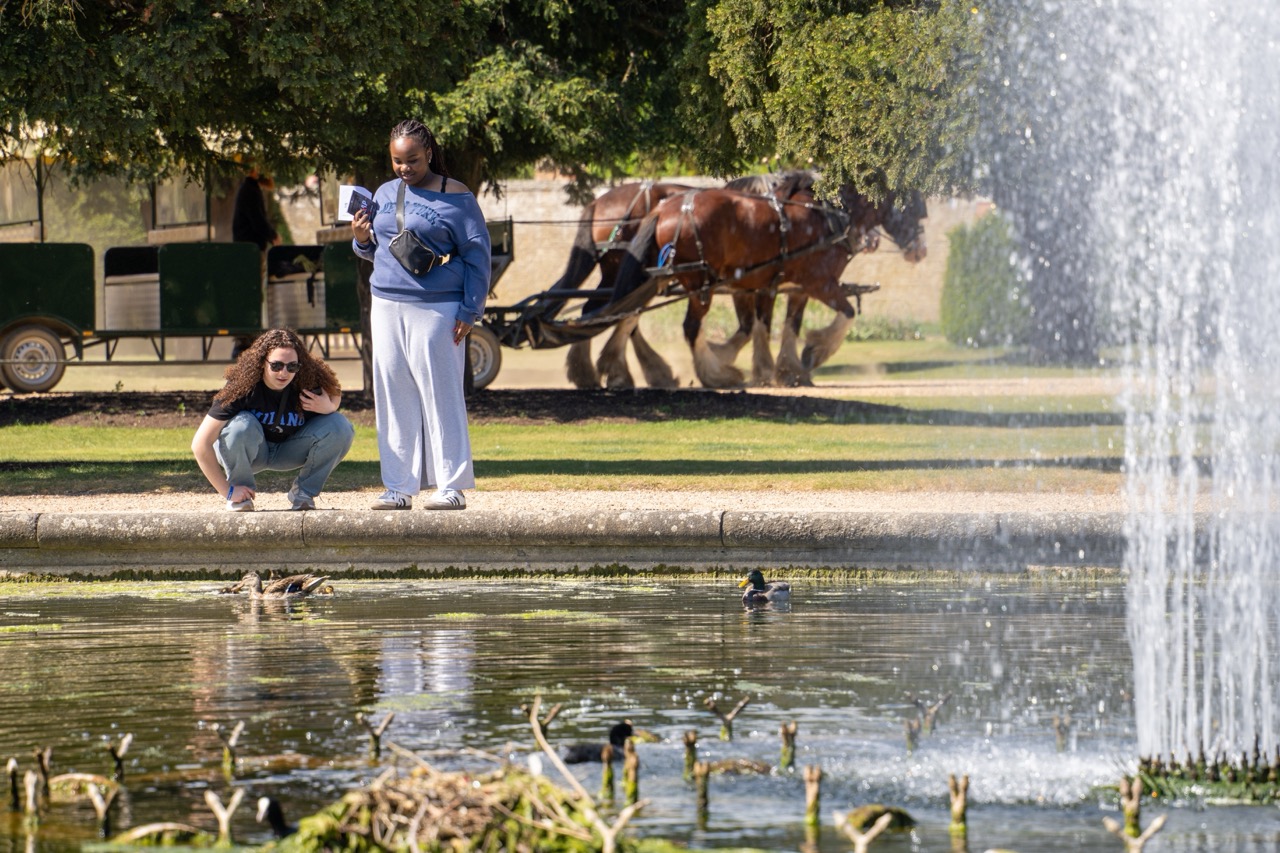

1. Overall Rating (0–10) — 7.0
This photograph captures a vibrant, sun-drenched moment in a park, where human activity, nature, and historical charm converge in a dynamic yet harmonious scene. The juxtaposition of modern visitors with the traditional horse-drawn carriage and the lively fountain creates a rich narrative of leisure and timelessness. While the image is compelling in its storytelling and atmosphere, the slightly cluttered composition and overexposed water jet detract from its visual cohesion.
2. Composition (0–10) — 6.5
The framing balances foreground and background elements well, with the pond and fountain drawing the eye toward the central figures. However, the strong vertical line of the fountain on the right disrupts the horizontal flow, and the scattered foreground elements create a sense of visual clutter.
3. Lighting (0–10) — 8.0
Bright, natural sunlight enhances the scene’s clarity and vibrancy, casting soft shadows that define form and depth. The high-key lighting emphasizes the crispness of the day, though the fountain’s spray is slightly overexposed, losing detail in the brightest areas.
4. Color & Tone (0–10) — 7.5
The palette is rich and natural, with deep greens from the trees, warm browns of the horses, and the cool blues of the water and clothing creating a balanced contrast. The tones feel authentic and sunlit, contributing to the image’s cheerful, summery mood.
5. Creativity (0–10) — 7.0
The image successfully captures a layered narrative—tourism, nature, tradition, and leisure—through its candid composition. While the concept is familiar, the way the elements interact gives it a fresh, observational quality that feels both spontaneous and purposeful.
6. Technical Quality (0–10) — 8.0
Sharp focus is maintained across the frame, particularly on the two individuals, with clean detail in the textures of clothing, water, and foliage. The exposure is generally well-managed, though the fountain’s spray shows slight overexposure.
7. Emotional Impact (0–10) — 7.5
The scene evokes a sense of peace and curiosity, with the quiet interaction of the subjects and the ducks suggesting a moment of quiet connection with nature. The presence of the carriage and fountain adds a nostalgic charm, inviting the viewer to imagine a story behind the image.


1. Overall Rating (0–10) — 7.5
This photograph captures the grandeur of a stately English garden, where classical architecture meets meticulously sculpted nature. The symmetrical composition and vibrant greenery evoke a sense of order and timelessness, while the fountain and visitors add subtle life and scale. Though the image is rich in detail and atmosphere, a slightly warmer color tone and more dynamic lighting could elevate its emotional resonance.
2. Composition (0–10) — 8.0
The symmetrical framing centers the grand building with precision, flanked by two large, sculpted trees that guide the eye toward the focal point. The pond in the foreground adds depth and reflection, while the fountain creates a vertical axis that draws attention upward, enhancing the sense of balance and harmony.
3. Lighting (0–10) — 7.0
Bright, natural daylight illuminates the scene evenly, highlighting the architectural details and the lush foliage. The shadows are soft and well-distributed, suggesting a midday sun that enhances clarity without harsh contrasts. However, the lighting feels somewhat flat, lacking the golden warmth that might deepen the mood.
4. Color & Tone (0–10) — 7.5
The palette is dominated by rich greens and the creamy stone of the building, complemented by the blue of the sky. The colors are vibrant and natural, with a subtle coolness in the water and shadows that enhances the crispness of the scene. A touch more saturation in the greens and a warmer cast could amplify the visual warmth.
5. Creativity (0–10) — 7.0
The photograph is strong in its traditional approach, capturing the elegance of a formal garden with clear intent. The symmetry and scale create a powerful visual narrative, but the composition leans toward the expected rather than the unexpected, offering little surprise or personal interpretation.
6. Technical Quality (0–10) — 8.5
Sharp focus throughout, with excellent detail in both the foreground and background. The exposure is well-balanced, and the image is free of noise or distortion, showcasing high technical precision and control.
7. Emotional Impact (0–10) — 7.0
The image evokes a sense of peace and reverence for history and design, inviting contemplation of the past. The presence of visitors adds a human element, grounding the grandeur in reality. While the mood is pleasant and serene, it remains somewhat detached, leaving the viewer as an observer rather than a participant.
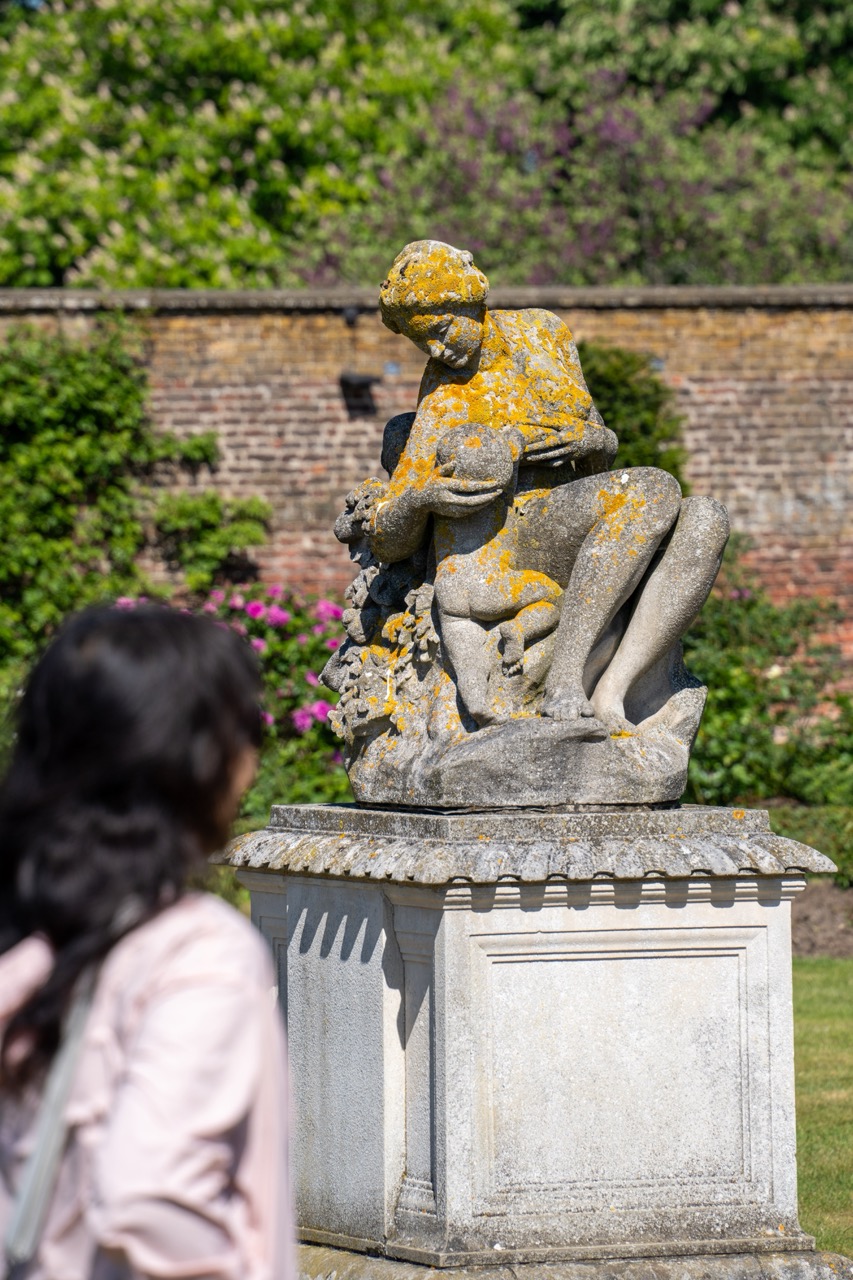

1. Overall Rating (0–10) — 7.0
This photograph captures a quiet, contemplative moment in a sun-dappled garden, where the weathered sculpture becomes a focal point of time and emotion. The interplay between the aged stone, vibrant greenery, and the blurred figure in the foreground creates a layered narrative of presence and memory. While the composition leans slightly toward the ordinary, its natural lighting and textured detail lend it a poetic stillness that invites reflection.
2. Composition (0–10) — 7.0
The statue is centered and elevated, drawing the eye, while the out-of-focus figure in the foreground adds depth and a sense of lived experience. The diagonal line of the brick wall and soft bokeh of the flowers guide the viewer’s gaze subtly toward the subject.
3. Lighting (0–10) — 8.0
Natural sunlight bathes the scene in a warm, golden glow, highlighting the texture of the lichen and the soft contours of the sculpture. The dappled light on the background adds dimension and enhances the tranquil mood.
4. Color & Tone (0–10) — 7.5
The palette balances earthy yellows and greens with the soft pink of the flowers and the neutral tones of the stone and brick. The warm highlights and rich shadows create a harmonious, naturalistic tone that feels both grounded and inviting.
5. Creativity (0–10) — 7.0
The image blends documentary realism with artistic intent, using the blurred figure to imply narrative and motion. The choice to capture the moment from a slightly low angle and from behind the viewer adds a sense of intimacy and discovery.
6. Technical Quality (0–10) — 8.0
Sharp focus on the sculpture, with a well-controlled depth of field, renders the texture of the stone and lichen with clarity. The exposure is balanced, with no harsh shadows or blown highlights.
7. Emotional Impact (0–10) — 7.5
The image evokes a sense of quiet reverence and timelessness, inviting the viewer to pause and reflect on the passage of time and the beauty of imperfection. The presence of the human figure adds a layer of connection, suggesting that even in stillness, life continues.
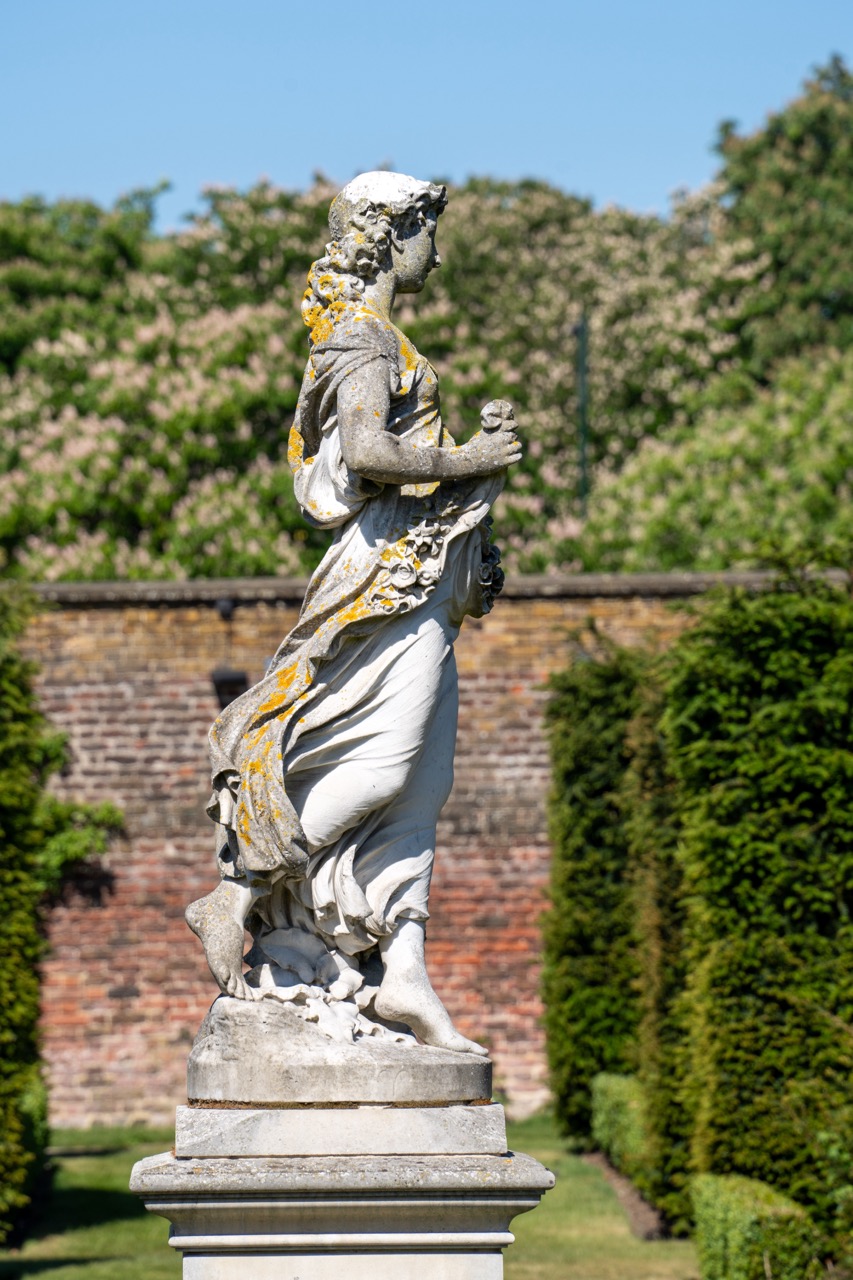

1. Overall Rating (0–10) — 7.5
This photograph captures the timeless elegance of a classical garden statue, where weathered stone and nature’s encroachment tell a story of time and decay. The soft sunlight and rich textures of lichen and foliage lend the image a contemplative, almost poetic quality, while the composition draws the eye to the statue’s graceful form. Though the background is slightly busy, the image succeeds in blending artistry with environmental context, creating a moment that feels both historical and serene.
2. Composition (0–10) — 7.0
The statue is positioned slightly off-center, creating a dynamic balance with the surrounding greenery and brick wall. The leading lines of the hedge and the base of the pedestal guide the viewer’s gaze naturally toward the subject, though the depth of field could be tighter to further isolate the figure.
3. Lighting (0–10) — 8.0
Bright, natural daylight enhances the texture of the stone and lichen, casting soft shadows that define the statue’s form. The clear blue sky provides a clean backdrop, allowing the warm tones of the sculpture and foliage to stand out.
4. Color & Tone (0–10) — 7.5
The palette is harmonious, with earthy yellows of the lichen contrasting gently against the cool white of the marble and the deep green of the hedges. The overall tone is warm and balanced, with good contrast that highlights detail without oversaturation.
5. Creativity (0–10) — 7.0
The image is conceptually strong, emphasizing the dialogue between human art and natural forces. While not radically original in subject, the framing and attention to texture lend a fresh, contemplative perspective to a familiar scene.
6. Technical Quality (0–10) — 8.0
Sharp focus on the statue ensures clarity in the intricate details of the drapery and features. The exposure is well-managed, with no blown-out highlights or lost shadows, showcasing a high level of technical precision.
7. Emotional Impact (0–10) — 7.5
The photograph evokes a sense of quiet reverence and nostalgia, inviting the viewer to reflect on the passage of time. The aged beauty of the statue, softened by nature, creates a poignant emotional resonance that lingers.
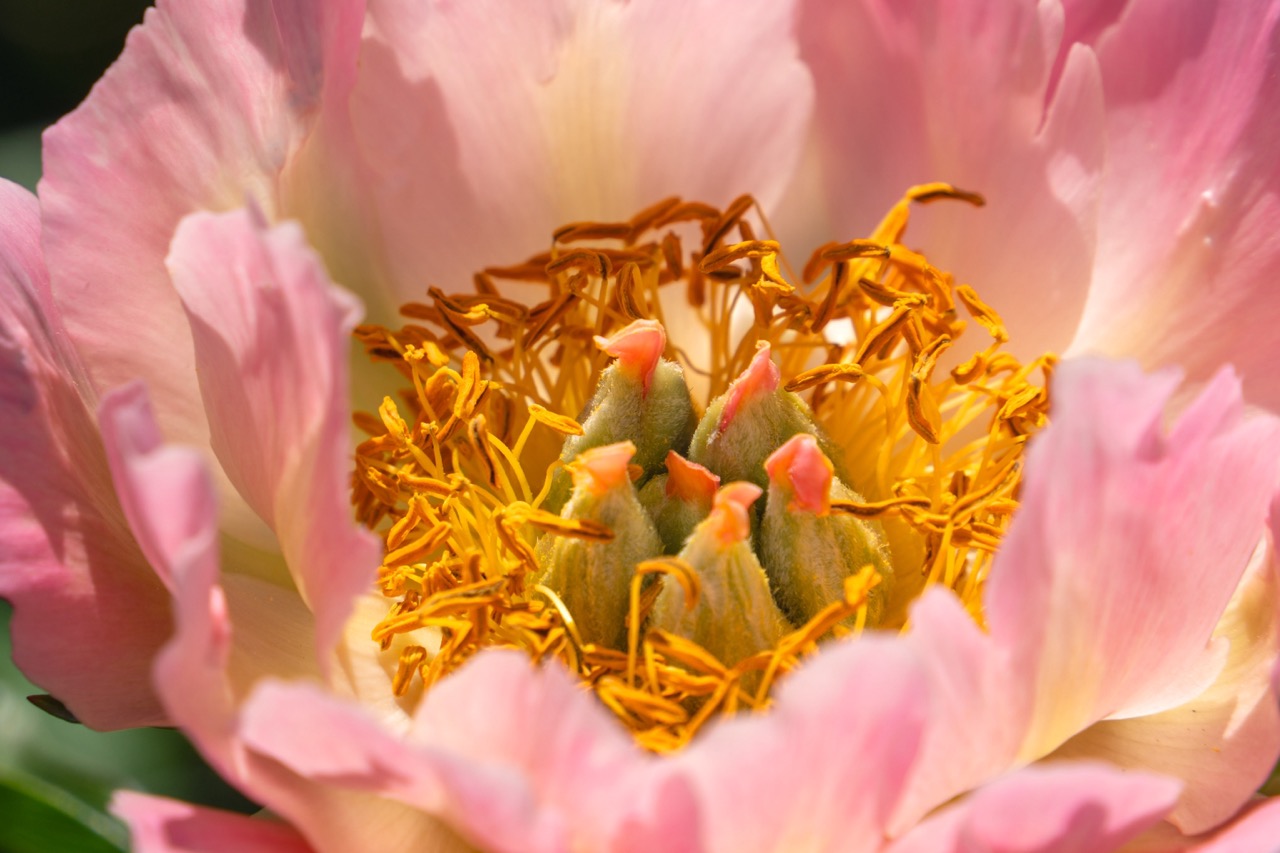

1. Overall Rating (0–10) — 8.0
This photograph captures the delicate intimacy of a blooming peony with remarkable clarity and warmth, drawing the viewer into its intricate center. The soft pink petals and vibrant golden stamens create a natural harmony, while the shallow depth of field enhances the sense of closeness and fragility. Though the composition is tightly focused, the image succeeds in conveying both the beauty and complexity of nature in a single, luminous moment.
2. Composition (0–10) — 8.0
The central framing draws immediate attention to the flower’s core, with the petals radiating outward in a balanced, circular arrangement. The slight asymmetry of the stamens adds visual interest without disrupting harmony, and the shallow depth of field effectively isolates the subject.
3. Lighting (0–10) — 9.0
Bright, natural sunlight enhances the flower’s luminosity, illuminating the translucent petals and casting a warm glow on the golden stamens. The light creates subtle shadows that add depth and dimension, emphasizing texture and form.
4. Color & Tone (0–10) — 9.0
The soft gradient from pale pink to creamy white in the petals contrasts beautifully with the rich, golden yellows of the stamens. The warm tonal balance evokes a sense of springtime vitality, and the colors feel both natural and artistically refined.
5. Creativity (0–10) — 8.0
The close-up perspective transforms a familiar flower into a richly detailed microcosm, inviting contemplation of the hidden structures within. The focus on the reproductive center gives the image a subtle narrative of life and growth.
6. Technical Quality (0–10) — 9.0
Exceptionally sharp focus on the central elements, with precise control over depth of field. The image is free of noise or blur, and the fine textures of the petals and stamens are rendered with clarity.
7. Emotional Impact (0–10) — 8.5
The photograph evokes a quiet sense of wonder and tenderness, capturing the fleeting beauty of a bloom in full life. Its intimacy and warmth resonate deeply, inviting a moment of stillness and appreciation.
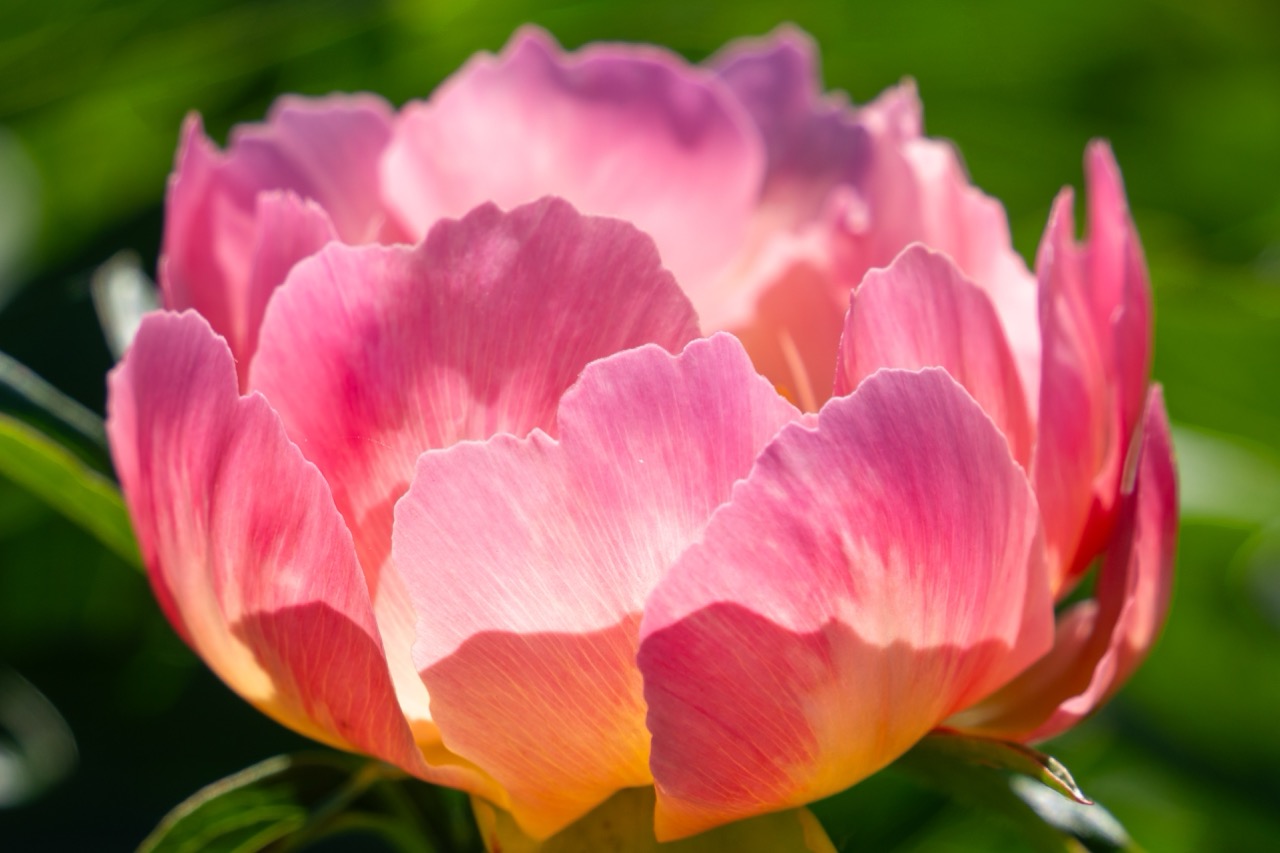

1. Overall Rating (0–10) — 8.0
This photograph captures the delicate complexity of a blooming peony with a luminous, almost ethereal quality. The interplay of light and color on the layered petals creates a sense of depth and vitality, while the soft green backdrop enhances the flower’s organic elegance. Though the image is visually rich, its simplicity borders on minimalism, leaving room for greater narrative tension or contrast to elevate its emotional resonance.
2. Composition (0–10) — 7.5
The flower is centered with a strong focal point, drawing the eye into the intricate petal structure. The shallow depth of field isolates the subject effectively, though the composition feels slightly static, lacking dynamic leading lines or asymmetrical balance to propel the viewer deeper into the frame.
3. Lighting (0–10) — 9.0
Natural sunlight bathes the petals in a warm, golden glow, highlighting their translucent texture and creating a radiant halo effect. The soft backlighting enhances the flower’s form and depth, while the subtle shadows add dimension without obscuring detail.
4. Color & Tone (0–10) — 9.0
The gradient from deep pink to soft yellow at the base of the petals is rich and harmonious, complemented by the lush green background. The warm tones evoke a sense of springtime vitality, while the contrast between the vibrant flower and the muted foliage adds visual richness.
5. Creativity (0–10) — 8.0
The image demonstrates a thoughtful approach to capturing botanical beauty, emphasizing texture and light. While the subject is familiar, the artistic treatment—particularly the use of natural backlighting and color transitions—gives it a fresh, contemplative quality that elevates it beyond a simple floral portrait.
6. Technical Quality (0–10) — 9.0
The focus is sharp on the central petals, with fine detail visible in the delicate veins and edges. The exposure is well-balanced, and the resolution is crisp, showcasing the photographer’s control over both camera settings and natural conditions.
7. Emotional Impact (0–10) — 8.5
The image evokes a sense of serenity and wonder, inviting the viewer to pause and appreciate the fragile beauty of nature. The soft light and vibrant colors create an uplifting, almost meditative atmosphere, making the flower feel both intimate and monumental.
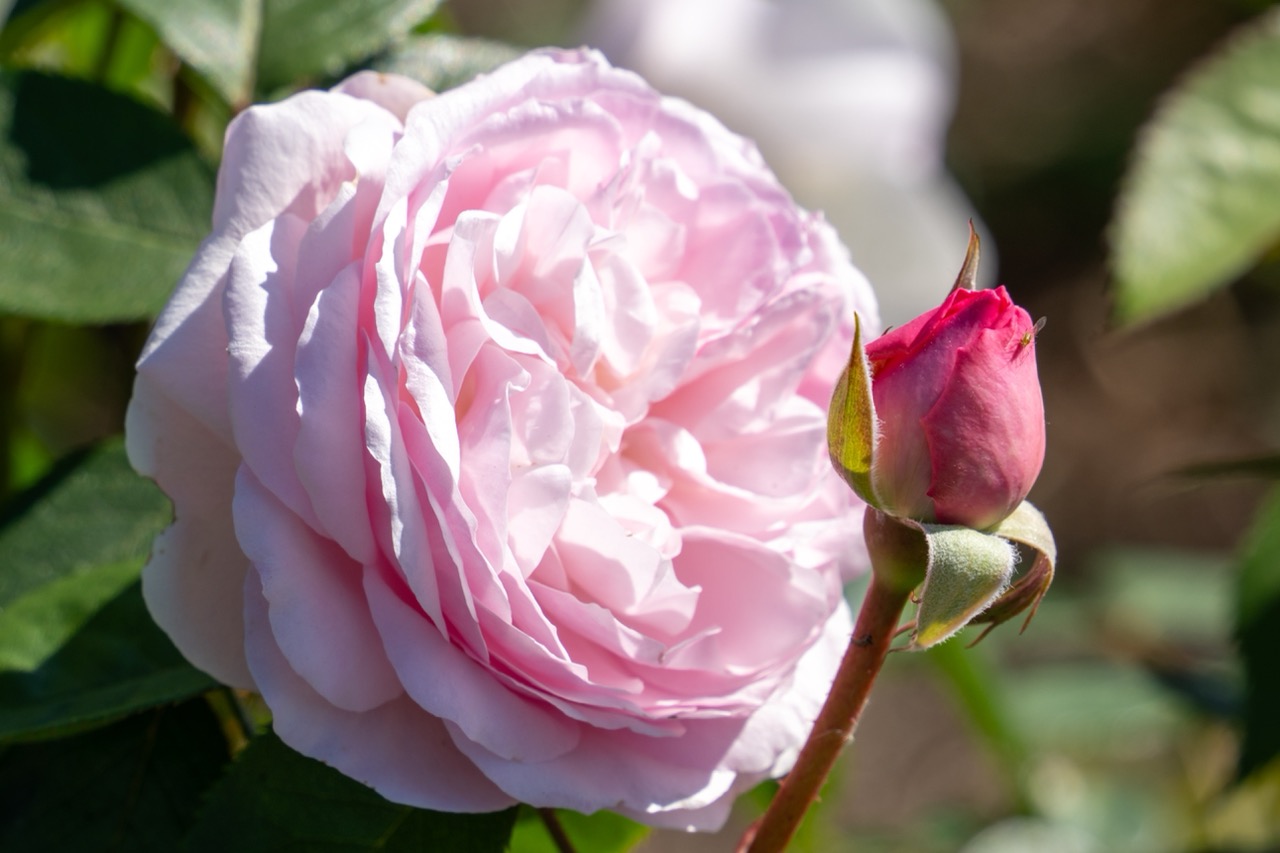

1. Overall Rating (0–10) — 8.0
This photograph captures the delicate elegance of a blooming rose with a soft, dreamy quality that feels both intimate and timeless. The contrast between the fully opened flower and the tightly closed bud creates a narrative of growth and potential. While the image is visually rich and emotionally resonant, a slightly more intentional focus on the background blur could elevate its artistry further.
2. Composition (0–10) — 8.0
The framing centers the blooming rose with a balanced placement of the bud to the right, creating a natural diagonal that guides the eye. The use of shallow depth of field effectively isolates the subject, enhancing its prominence against the softly blurred foliage.
3. Lighting (0–10) — 9.0
Natural sunlight gently illuminates the petals, highlighting their texture and layered form with soft highlights and subtle shadows. The light enhances the rose’s delicate pink tones and adds a luminous quality to the overall image.
4. Color & Tone (0–10) — 8.5
The soft pastel pink of the rose contrasts beautifully with the deep green leaves and the vibrant magenta of the bud. The color palette is harmonious and evocative, with a warm, natural tone that enhances the organic feel of the scene.
5. Creativity (0–10) — 8.0
The image tells a quiet story of life and transformation through the juxtaposition of bloom and bud. The choice to capture this moment in such detail reflects a thoughtful, poetic approach to nature photography.
6. Technical Quality (0–10) — 9.0
Sharp focus on the main flower, precise depth of field, and clean exposure demonstrate strong technical control. The fine detail in the petals and the smooth background blur are executed with precision.
7. Emotional Impact (0–10) — 8.5
The photograph evokes a sense of peace, tenderness, and quiet beauty, inviting the viewer to pause and appreciate the fleeting elegance of a single moment in nature.
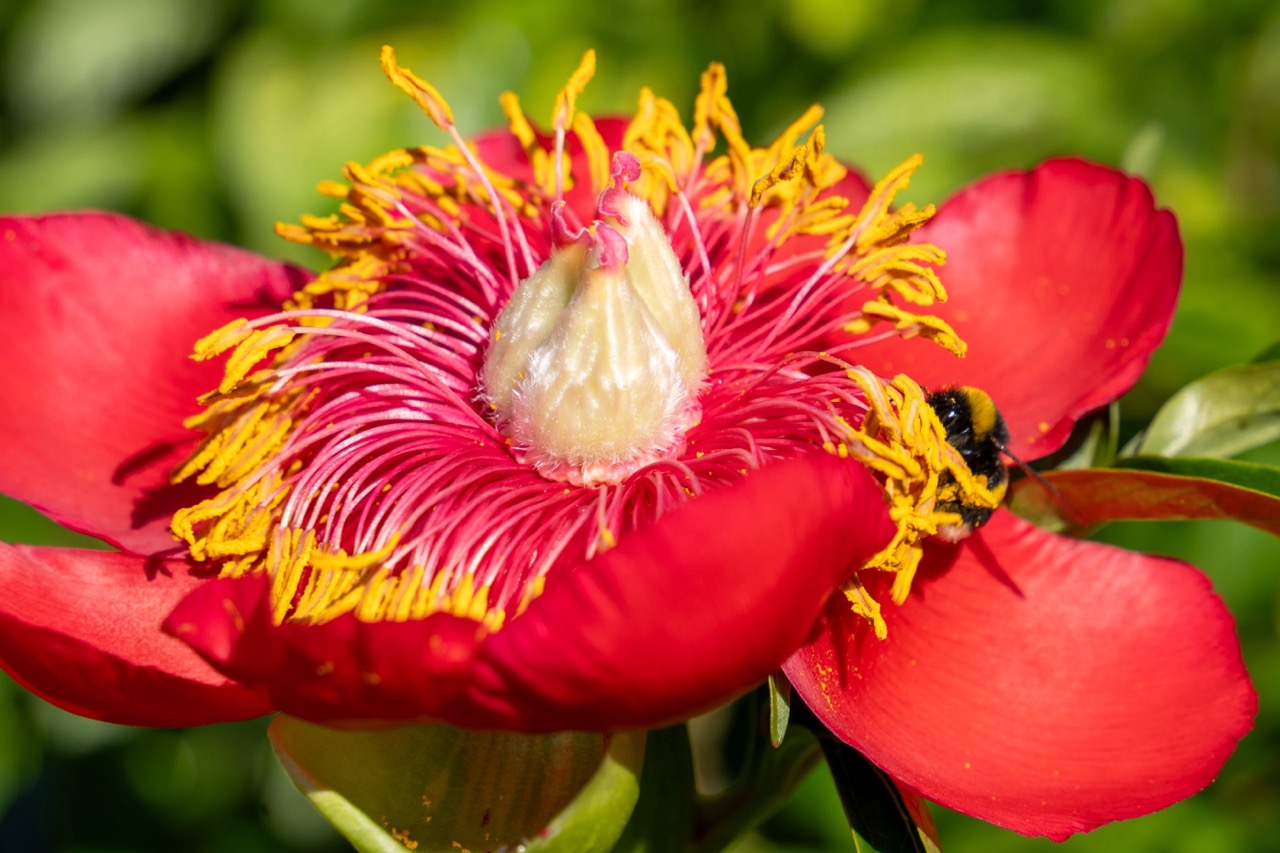

1. Overall Rating (0–10) — 8.5
This photograph captures a vibrant moment of natural interaction, where the bold red of the peony and the golden pollen create a vivid, almost painterly composition. The bumblebee’s presence adds life and narrative, grounding the image in the quiet drama of pollination. While the scene is rich in color and detail, the composition’s slight asymmetry and the bee’s placement, though natural, keep it from achieving perfect visual balance.
2. Composition (0–10) — 7.5
The flower dominates the frame with strong diagonal lines from the petals, drawing the eye toward the center. The bumblebee’s position on the right edge creates a dynamic tension, though a more centered subject might have enhanced symmetry.
3. Lighting (0–10) — 9.0
Bright, natural sunlight illuminates the scene with clarity and depth, highlighting the texture of the stamens and the fuzzy body of the bee. The contrast between the illuminated flower and the soft, out-of-focus green background enhances the subject’s vibrancy.
4. Color & Tone (0–10) — 9.0
The vivid red and yellow of the flower create a powerful complementary contrast, while the soft green backdrop provides a harmonious balance. The warm tone enhances the sense of life and vitality.
5. Creativity (0–10) — 8.0
The image captures a fleeting moment of nature with both precision and storytelling. The choice to focus on the bee’s interaction with the flower elevates it beyond a simple floral portrait, suggesting a narrative of sustenance and coexistence.
6. Technical Quality (0–10) — 9.0
Exceptionally sharp focus on the flower’s center, with fine detail visible in the stamens and pollen. The shallow depth of field effectively isolates the subject, showcasing excellent control over aperture and focus.
7. Emotional Impact (0–10) — 8.5
The photograph evokes a sense of wonder and intimacy with nature, inviting the viewer to pause and appreciate the delicate, intricate beauty of a single moment in the life of a flower and its pollinator.
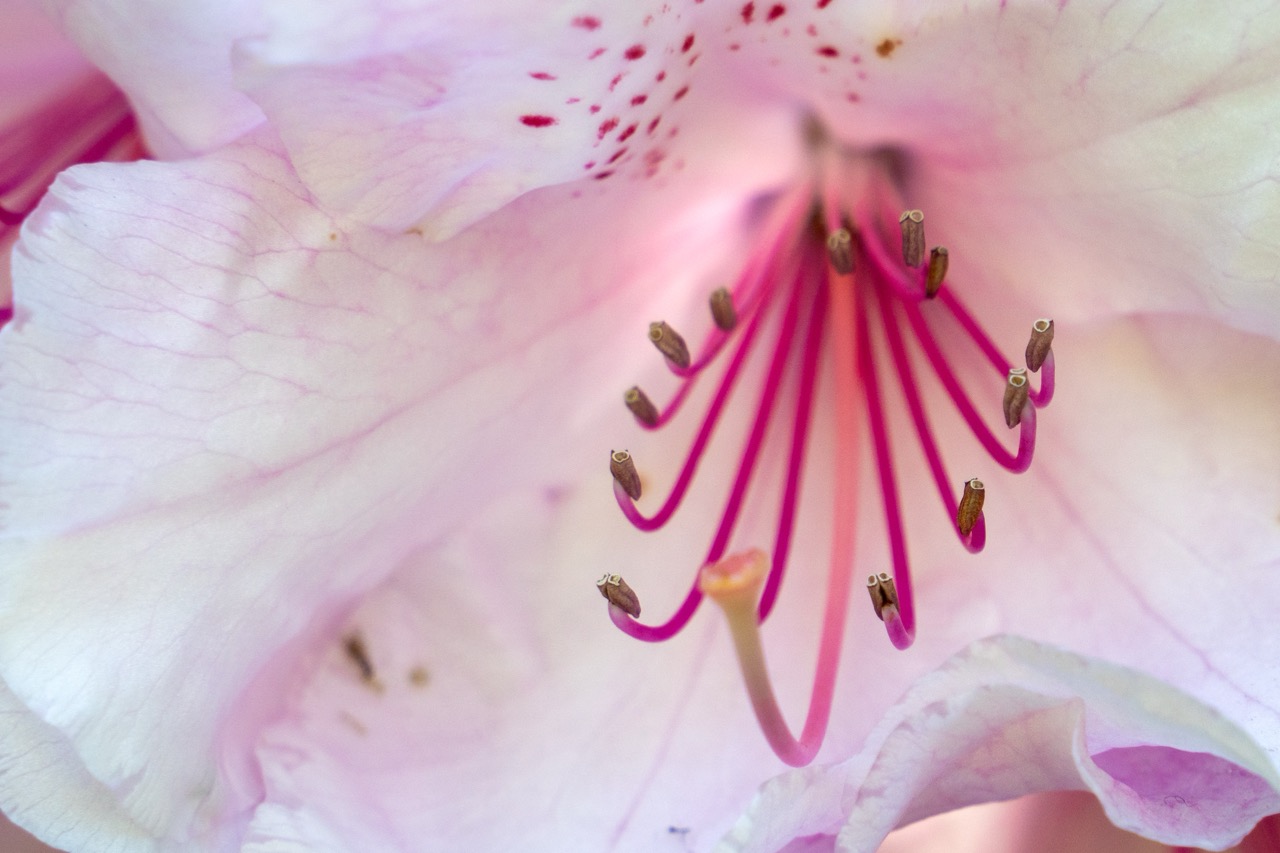

1. Overall Rating (0–10) — 8.0
This close-up of a rhododendron reveals the delicate complexity of nature, where soft pink petals and vibrant stamens converge in a symphony of form and color. The shallow depth of field draws the eye to the flower’s core with intimate precision, while the subtle speckling on the petals adds a touch of natural imperfection. The image feels both serene and dynamic, capturing a fleeting moment of botanical beauty with quiet elegance.
2. Composition (0–10) — 8.5
The flower is centered with strong visual focus on the stamens, creating a natural focal point that draws the viewer inward. The curved lines of the petals and stamens guide the eye toward the center, enhancing the sense of depth and organic flow.
3. Lighting (0–10) — 8.0
Soft, diffused light enhances the flower’s delicate textures and subtle gradients, avoiding harsh shadows and highlighting the fine veining on the petals. The even illumination supports the image’s gentle, contemplative mood.
4. Color & Tone (0–10) — 8.5
The palette of soft pinks, creamy whites, and deep magenta stamens creates a harmonious and visually rich contrast. The tonal range is smooth, with a warm, natural feel that enhances the flower’s organic character.
5. Creativity (0–10) — 8.0
The choice to focus on the flower’s interior and the use of macro perspective reveal a poetic interpretation of natural detail. The composition elevates a common bloom into a meditative study of form and structure.
6. Technical Quality (0–10) — 9.0
Exceptionally sharp focus on the stamens, with precise control over depth of field and no visible noise or distortion. The clarity of the fine details demonstrates strong technical execution.
7. Emotional Impact (0–10) — 8.5
The image evokes a sense of stillness and wonder, inviting quiet reflection on the intricate beauty of the natural world. Its intimacy and clarity foster a deep emotional connection with the subject.
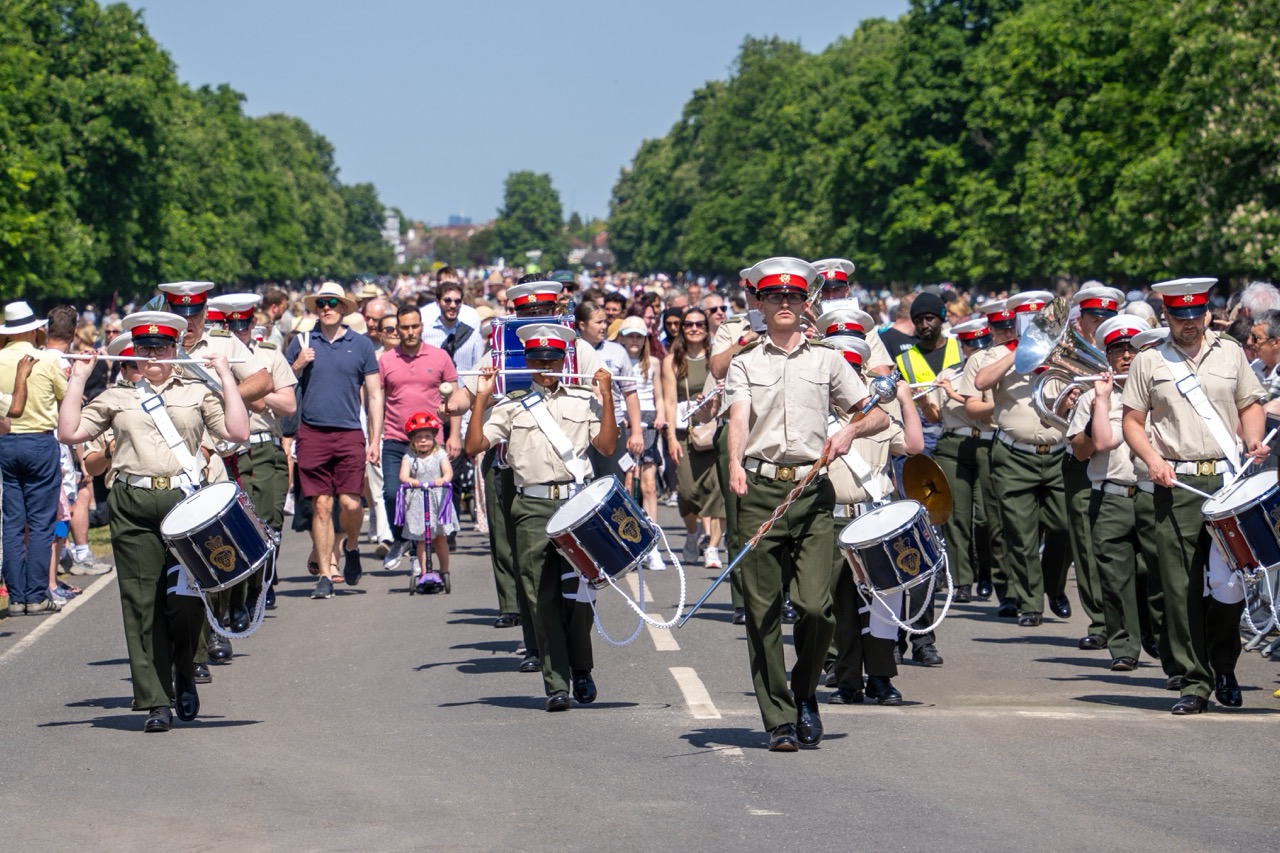

1. Overall Rating (0–10) — 7.5
This photograph captures the vibrant energy of a military parade on a bright, sunlit day, where disciplined precision meets public celebration. The composition draws the viewer into the procession, with the band members leading the eye down the tree-lined avenue, while the surrounding crowd adds a sense of communal joy and occasion. Though the scene is rich in activity and context, the flat lighting and crowded frame slightly dilute the emotional intensity, leaving room for more dynamic focus.
2. Composition (0–10) — 7.0
The central alignment of the marching band creates a strong leading line, guiding the eye through the frame toward the distant crowd. The wide perspective captures the scale of the event, though the dense gathering on both sides slightly disrupts the visual flow and creates a sense of visual clutter.
3. Lighting (0–10) — 8.0
Bright, natural daylight enhances the clarity and vibrancy of the scene, casting crisp shadows that add depth and dimension. The overhead sun emphasizes the uniforms and instruments, highlighting details while maintaining even exposure across the frame.
4. Color & Tone (0–10) — 7.5
The palette is dominated by the earthy tones of the uniforms, punctuated by the bold reds and blues of the hats and drum insignia. The lush green trees and bright sky provide a natural contrast, enhancing the visual richness without overwhelming the central subjects.
5. Creativity (0–10) — 7.0
The image successfully captures a moment of ceremonial pride and public engagement, presenting a traditional event with a documentary feel. While the concept is straightforward, the framing and timing convey a sense of authenticity and movement that elevates it beyond a simple snapshot.
6. Technical Quality (0–10) — 8.5
Sharp focus across the frame, precise exposure, and clean detail in both the foreground and background demonstrate strong technical execution. The camera’s ability to freeze motion without blur preserves the energy of the march.
7. Emotional Impact (0–10) — 7.5
The photograph evokes a sense of national pride and community spirit, with the disciplined band and smiling onlookers creating a mood of celebration. The viewer is drawn into the moment, feeling both the formality of the parade and the joy of the occasion.


1. Overall Rating (0–10) — 4.0
This image functions as a straightforward informational announcement, prioritizing clarity over aesthetic appeal. While the message is legible and organized, the stark, monotonous design lacks visual engagement, rendering it more like a utility notice than a compelling piece of communication. The absence of imagery or typographic hierarchy limits its ability to capture attention or convey a sense of place or occasion.
2. Composition (0–10) — 5.0
The layout is centered and balanced, but the lack of visual hierarchy and minimal use of space creates a dense, text-heavy appearance. The title is prominent, but the subsequent blocks of text are visually indistinct, reducing readability and engagement.
3. Lighting (0–10) — 7.0
As a digital graphic, lighting is not applicable in the traditional sense. However, the uniform, flat lighting of the interface ensures even visibility and legibility across all elements.
4. Color & Tone (0–10) — 5.0
The grayscale palette is functional but emotionally flat. The lack of color variation or tonal contrast diminishes visual interest and fails to evoke the natural vibrancy associated with gardens.
5. Creativity (0–10) — 4.0
The design is utilitarian and conventional, offering no creative reinterpretation of the content. The absence of imagery, metaphor, or typographic play limits its ability to stand out or convey a sense of place or wonder.
6. Technical Quality (0–10) — 8.0
The text is sharp, cleanly rendered, and free of artifacts. The choice of a clean sans-serif font enhances legibility, and the spacing is consistent.
7. Emotional Impact (0–10) — 3.0
The image communicates information efficiently but fails to inspire or connect emotionally. The cold, impersonal tone distances the viewer from the potential joy and serenity of the gardens it promotes.
Loading map...